Kakadu National Park, located in the Northern Territory of Australia, is a region steeped in rich Aboriginal history and culture. Aboriginal people have inhabited this land for over 60,000 years, leaving behind numerous rock art sites and archaeological evidence. As you delve into the heart of Kakadu, you’ll witness the profound connection between the land and its Indigenous people, the Bininj. Discover ancient rock art sites that tell stories of Dreamtime creation and explore the vibrant cultural heritage that has thrived here for tens of thousands of years.
Location
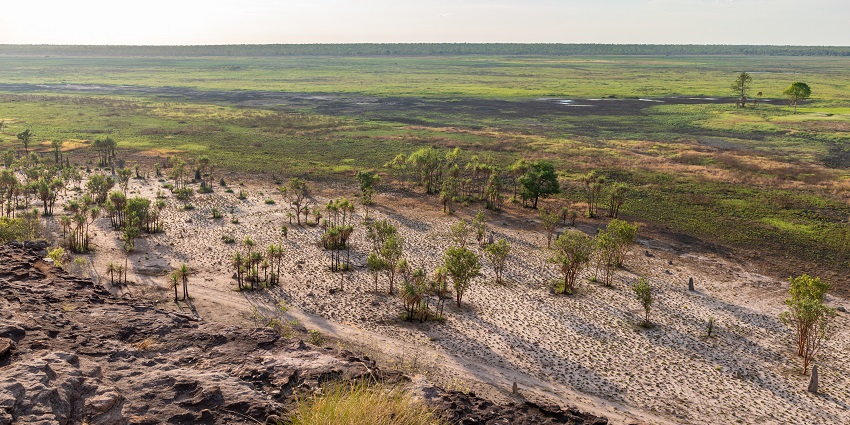
Photo: Dietmar Rabich / Wikimedia Commons
Kakadu National Park, a World Heritage Site in the Northern Territory of Australia, is a vast, ecologically diverse region spanning nearly 20,000 square kilometers. It is home to a rich cultural heritage, with Aboriginal people having inhabited the land for over 60,000 years. The park is renowned for its stunning landscapes, diverse wildlife, and significant Aboriginal rock art sites, such as Ubirr.
Suggested Read: Things To Do In Sydney
How To Reach
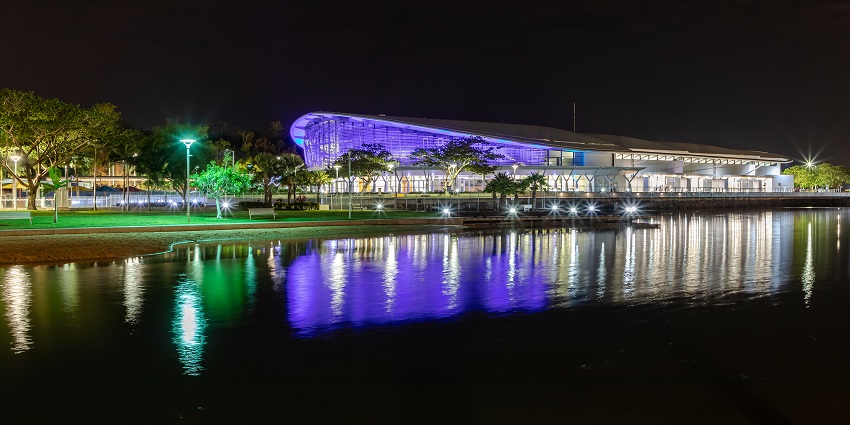
Photo: Dietmar Rabich / Wikimedia Commons
By Air: Darwin International Airport is the closest major airport to Kakadu National Park. Once in Darwin, you can hire a car or join a tour to reach the park.
By Road: The drive from Alice Springs to Kakadu takes approximately 12-14 hours along the Stuart Highway and the Plenty Highway. You can also join a tour that includes a stop at Uluru (Ayers Rock).
Join A Tour: There are several tour operators offering day trips or multi-day tours to Kakadu. These tours typically include transportation, accommodation, meals, and guided activities.
Places To Visit In And Around Kakadu National Park
1. Ubirr Rock Art Site
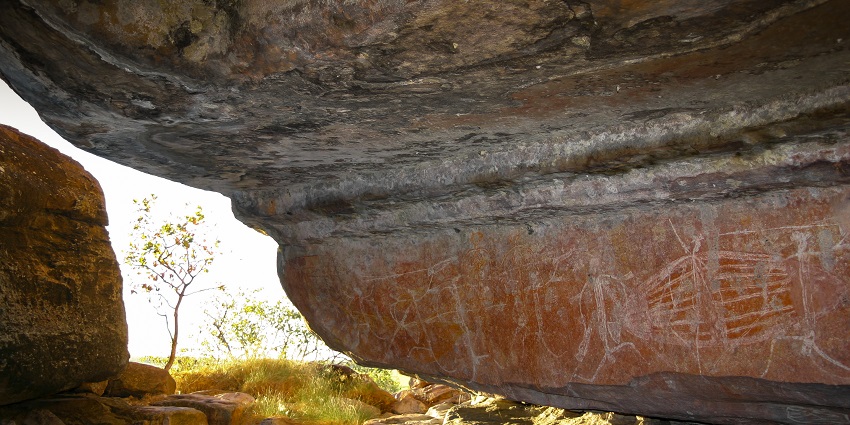
Photo: Martin Kraft / Wikimedia Commons
Ubirr, a significant rock formation in Kakadu National Park, is renowned for its ancient Aboriginal rock art. The site features a collection of paintings depicting creation ancestors and local animals, dating back thousands of years. These artworks offer a unique glimpse into the rich cultural heritage of the Bininj/Mungguy people and their deep connection to the land. Ubirr, along with Burungku (Nourlangie), houses some of the world’s most extensive and historically significant rock art collections, providing a fascinating record of Aboriginal life and spirituality.
Best Time To Visit: May to September
Suggested Read: Beaches In Australia
2. Jim Jim Falls
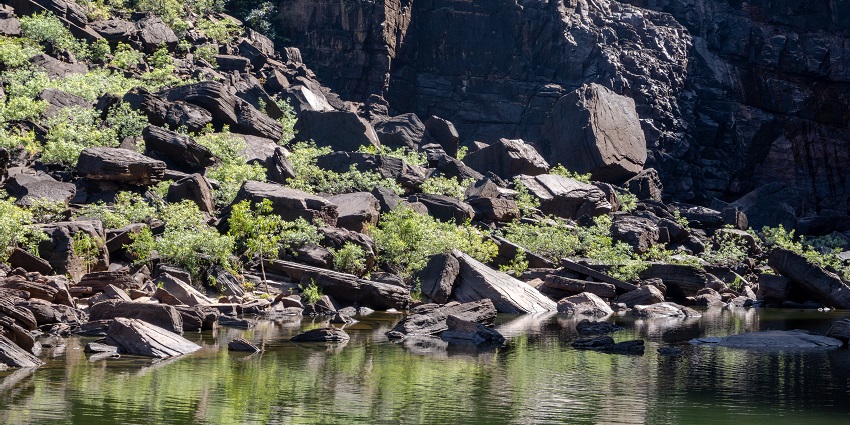
Photo: Dietmar Rabich / Wikimedia Commons
Jim Jim Falls, a stunning plunge waterfall located in Kakadu National Park, is a natural wonder known for its dramatic drop of 140-200 meters.It is one of the most spectacular waterfalls in Australia, cascading over a sheer cliff face. The falls are only accessible during the wet season when the water flow is high. The falls are most impressive during the wet season when the water flow is at its peak. Access to the falls is limited, requiring a 4WD vehicle and often involving a scenic flight.
Cost: Included in the park fee, but requires a 4WD vehicle and permits
Best Time To Visit: November to April
3. Yellow Water Billabong
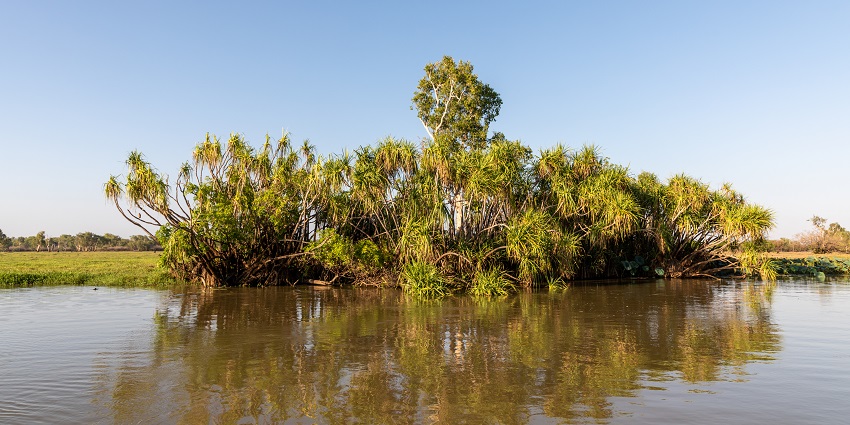
Photo: Dietmar Rabich / Wikimedia Commons
Yellow Water, a central hub within Kakadu, offers a diverse range of experiences for visitors. Explore the floodplain on a leisurely walk, marvel at the abundant wildlife, including massive saltwater crocodiles, on a boat cruise, or try your luck at fishing for barramundi. For a deeper cultural immersion, visit the Warradjan Aboriginal Cultural Centre to learn about the rich heritage of the Bininj and Mungguy people. This center provides insights into Aboriginal culture, art, and crafts, offering a memorable experience amidst the natural beauty of Kakadu.
Cost: Boat cruise fees AU$50 onwards
Best Time To Visit: May to September
Suggested Read: Explore The Scenic Australian Beaches In Adelaide On The Coast Of The Southern Indian Ocean
4. Nourlangie Rock Art Site
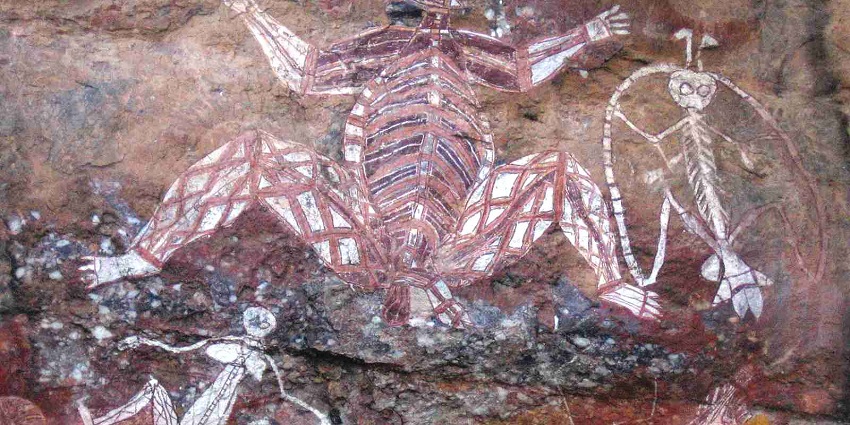
Photo: Saint amand / Wikimedia Commons
Nourlangie, a significant rock art site within Kakadu Park, is renowned for its ancient Aboriginal paintings depicting Dreamtime stories and ancestral beings. The site showcases a diverse range of art styles, including Mimi and x-ray, and features depictions of both traditional and introduced species. Despite the passage of time and human impact, rock art continues to offer valuable insights into the rich cultural heritage of the Gun-djeihmi people. However, the site faces ongoing challenges from natural weathering and human activities, emphasizing the importance of conservation efforts to preserve this invaluable cultural legacy.
Best Time To Visit: May to September
5. Arnhem Land
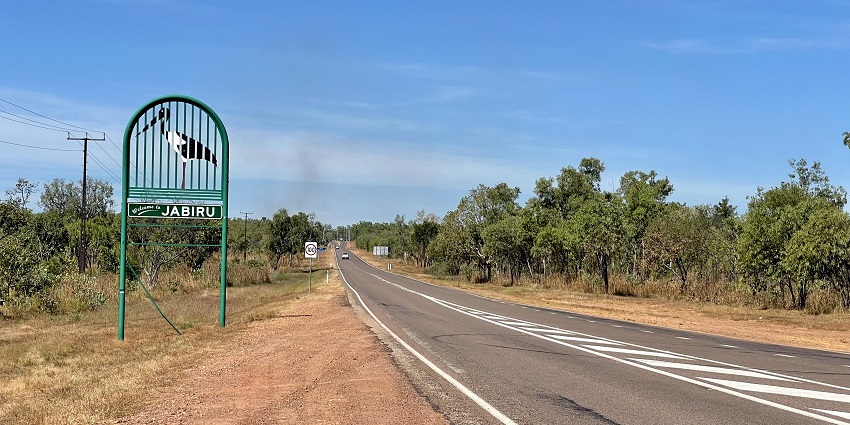
Photo: Kgbo / Wikimedia Commons / Image For Representation Only
Arnhem Land, a vast and culturally rich region in the Northern Territory of Australia, is renowned for its ancient Aboriginal culture, stunning landscapes, and rich natural resources. The region’s unique cultural heritage, coupled with its significant mineral resources, has shaped its history and continues to influence its future. In recent years, Arnhem Land has gained international attention as a hub for space exploration, with the establishment of the Arnhem Space Centre.
Best Time To Visit: May to September
Suggested Read: Top Beaches In Hobart Tasmania For A Perfect Coastal Getaway To Enjoy
Where To Stay

Photo: Derek Jensen / Wikimedia Commons / Image For Representation Only
Within the park, Cooinda Lodge provides a luxurious stay with comfortable rooms, a swimming pool, and a restaurant serving delightful meals. The uniquely designed Mercure Kakadu Crocodile Hotel, features standard rooms, a restaurant, bar, and swimming pool. For budget-conscious travelers, Aurora Kakadu Lodge & Caravan Park offers cabins, campsites, and motel rooms. Outside the park, the nearby town of Jabiru provides a range of accommodations, including hotels, motels, and guesthouses, serving as a handy base for exploring Kakadu.
Where To Eat

Photo: Alpha / Wikimedia Commons / Image For Representation Only
Kakadu National Park and its surrounding areas offer a variety of dining experiences, from authentic local flavors to diverse cuisines. Within the park, Anbinik Restaurant serves a range of delicious meals, including local specialties like barramundi and crocodile, perfect for those seeking authentic Australian cuisine. At Cooinda Lodge, the Barra Bar and Bistro provides a family-friendly outdoor dining experience, offering classic Australian dishes like burgers and pizzas alongside local specialties.
Suggested Read: Beaches Near Melbourne For A Perfect Getaway
Best Time To Visit
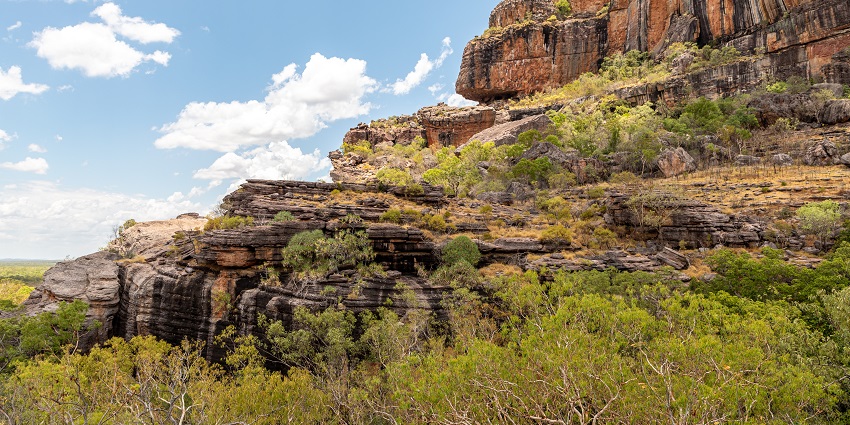
Photo: Dietmar Rabich / Wikimedia Commons
The best time to visit Kakadu National Park is during the dry season, from May to September. This is when the weather is pleasant, with clear skies and comfortable temperatures, making it ideal for exploring the park’s diverse landscapes and attractions. Most of the park’s visitor sites are open during this time, allowing you to experience the full range of activities, from hiking and boating to cultural tours and wildlife spotting.
Other Factors To Consider
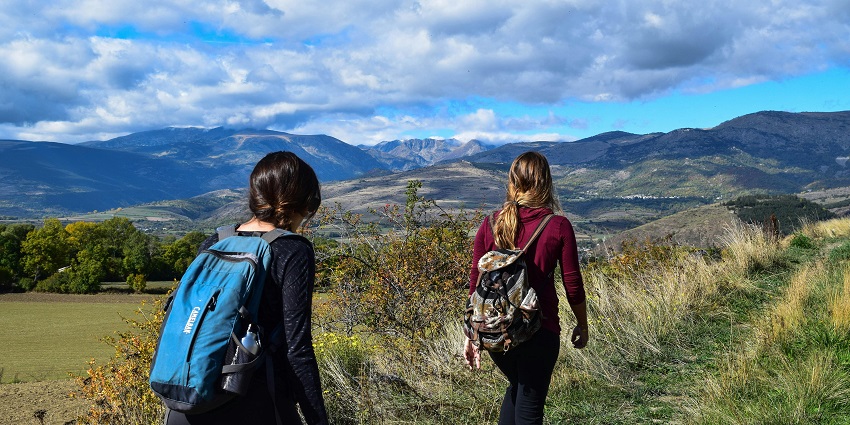
Photo: Pixabay / Pexels / Image For Representation Only
- Permits: For some activities like camping or four-wheel driving in specific areas, you may need permits. Check with the park authorities before your visit.
- Cultural Sensitivity: Be respectful of Aboriginal culture and traditions. Avoid touching rock art and other cultural sites.
- Sun Protection: The sun can be harsh in the Northern Territory, so it’s important to protect yourself from sunburn. Wear sunscreen, a hat, and sunglasses.
- Insect Repellent: Mosquitoes can be a nuisance, especially during the wet season. Use insect repellent to protect yourself from bites.
Suggested Read: Daintree National Park Australia
A visit to Kakadu National Park is an unforgettable experience. Its stunning landscapes, rich cultural heritage, and diverse wildlife offer something for everyone. From ancient rock art to breathtaking waterfalls and abundant wildlife, the park is a testament to the beauty and resilience of the Australian wilderness. By understanding and respecting the cultural significance of the land and its people, visitors can truly appreciate the unique and timeless beauty of Kakadu Park. So plan your adventure to the National park now, book your trip with TripXL.
Cover Photo: Dietmar Rabich / Wikimedia Commons


 WhatsApp
WhatsApp
 Twitter
Twitter









